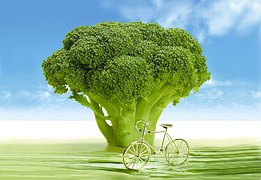Posted on May 12, 2015 by Jenny Cromack
Low Iron levels is big problem for a lot of people, especially women of reproductive age and children who have a greater requirement for growth and development.
This blog looks at why is iron in your diet important but essentially, everyone needs iron in their diet for our bodies to make healthy red blood cells and to sustain our energy levels.
Are you getting enough Iron in your diet?
If you’re low in iron you’re likely to be suffering from tiredness, have a pale complexion, feel cold and experience problems concentrating, which is often a particular issue for school children. Individuals with low iron levels also more likely to pick up illness such as colds and infections because iron is needed for a healthy immune system.
How to get the most Iron from your food
Making clever food combinations can really help maximise Iron intake. For example, vitamin C helps absorption of iron by converting it into a more soluble form and also reduces fatigue and lowers cortisol following stressful experiences. However calcium decreases the absorption of iron, so taking a supplement that contains both is ineffective for a lot of women. Likewise, if you drink milk or high calcium foods in a meal that contains iron foods, you’ll considerably decrease the absorption of iron.
The benefits of eating meat to increase Iron levels
The best source of bio-available iron is red meat, such as beef and liver. Chicken, turkey, pork and fish are also are good sources of iron. Like anything good quality sources of meat is important.
How to get enough Iron in a vegetarian diet?
Although red meat, poultry and fish provide an easy-to-absorb form of iron called haem, plant sources can make just as valuable a contribution. These are beans, lentils, peas, green leafy vegetables, broccoli, kale and watercress. Nuts and seeds are also a great as well as apricots, prunes and raisins.
To sum up, ensuring you have enough iron in your diet is key to ensure you have more energy and reduce illness.


